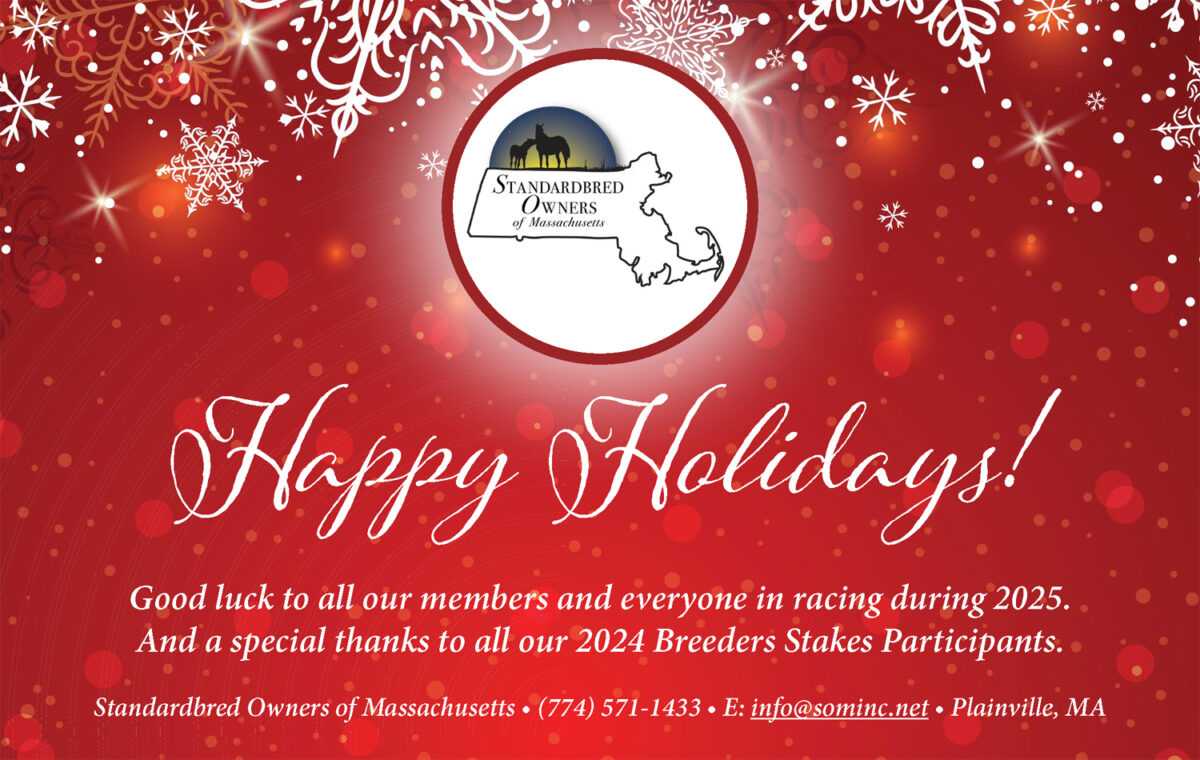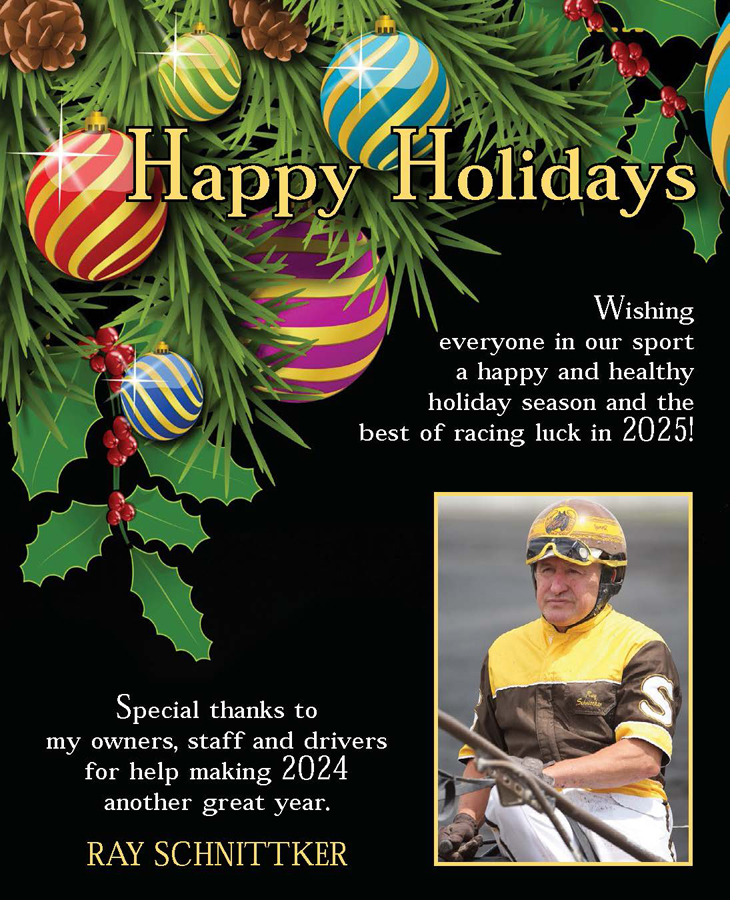

Horsepeople craft plan to correct fatal flaw in Ontario racing
by Dave Briggs
Owner Mark Beaven said there’s a fatal flaw in the three-tiered harness racing system enacted in Ontario in 2014 – it’s virtually impossible to turn a profit racing in the middle or lower tiers with the purse structure fixed at $65,000 and $35,000 per card, respectively.
“How can I in good faith go to colleagues of mine and say, ‘Why don’t you think about investing $20,000 or $30,000 into a racehorse this year. Oh yeah, by the way, if you win everything or you finish in the top three in every race, you’re still going to lose money?’” Beaven asked Thursday.
“The industry is in really dire straits because of this.”
Beaven said he and his trainer, Heather Toll, have been concerned about the new purse and race date allocation system ever since it was put in place a year after the province killed the lucrative Slots at Racetracks Program (SARP) and replaced it with a five-year, $500 million direct funding model. So the pair, along with trainers Mark Horner and Scott McNiven, quickly accepted a challenge from one of the chief architects of the purse system to put an alternate plan down on paper: (the full proposal is available here).
“They not only took me up on my challenge, they did better than I thought they would,” John Snobelen said Thursday. Snobelen was a member of the bi-partisan, three-person Horse Racing Industry Transition Panel consisting of former provincial cabinet ministers that crafted the purse plan, among numerous other restructuring ideas.
“It is a silly notion that three old politicians drew the line on purses and race dates and whatnot and hit exactly the perfect spot,” said Snobelen, who is now the interim executive director of a new body just starting to take shape called the Ontario Racing Association. “That we were close to the dart board is pretty remarkable. It just makes sense that the industry will come up with something different than we’ve currently got. I’ve got a lot of sympathy for people who have told me over the years that we really do need to make this middle part of our program more appealing commercially to owners. I get that.”
The 12-page 2016 Standardbred Racing Proposal that Beaven, Toll, Horner and McNiven crafted calls for radical changes to the purse levels in what’s known as the province’s signature and grassroots tiers of racing. The group felt the purse structure in the premier tier reserved for the two Woodbine Entertainment Group tracks was about right at $185,000 per card. Among the recommendations at the lower two levels, the proposal calls for closing three grassroots tracks in southwestern Ontario – Hiawatha Horse Park in Sarnia, Dresden Raceway and Leamington Raceway – cutting the race dates at grassroots tracks in Clinton and Hanover from 15 to eight at each, dropping Georgian Downs down from a signature track down to the grassroots level, increasing the number of race dates at signature track The Raceway at The Western Fair District and increasing purses to $40,000 and $82,000 per card at the grassroots and signature tracks, respectively.
“We’ve accepted the fact that there is no more money coming. We got the $100 million (per year), and that’s what we get. We’re not getting a cent more. So, given those parameters, it’s a case of ‘How do we do this? How do we get those purse levels up?’ There’s really only one way to look at it then and that’s to redistribute those numbers a little bit differently than what we have now,” Beaven said.
“We just started playing with numbers and, at the same time, we realized tracks are going to have to close. That’s not an easy decision to make, but we based it on, ‘Okay, which tracks are doing the best? Which ones have the best handles? Which ones had the best infrastructure?’ That kind of thing… Leamington, Dresden and Sarnia… are the three tracks with the three worst handles.
“It’s just a re-jigging of the numbers, a redistribution of the numbers. The other thing we felt is we wanted to have signature racing six days a week, 52 weeks of the year.”
Jamie Martin, the executive vice-president of racing at the Woodbine Entertainment Group, is one of the principal directors of the Standardbred Alliance that includes eight Ontario tracks – Woodbine, Mohawk, Western Fair, Grand River, Flamboro, Georgian, Clinton and Hanover. He said Beaven and company did approach him last year with some of their ideas, but the Alliance hasn’t met to offer an official opinion on the proposal.
“We haven’t discussed it as a group because really the biggest impact is on the regional tracks and, really, I don’t think any track is closing any time soon because there’s no political interest in having that happen,” Martin said Thursday.
Snobelen said two public consultation meetings to discuss the proposal are tentatively scheduled for the second week of February – likely the 9th at Western Fair in London and the 10th at Mohawk Racetrack in Campbellville.
Though he said a final plan to make changes to the purse structure and race dates allocation likely won’t look exactly like the proposal, he said it was a “100 per cent certainty” that changes to the current system are coming, just likely not for 2016 as the group pushed hard to achieve.
“We don’t want to waste any more time. The industry is in really dire straits because of this. We pushed it. We said, ‘We want this for 2016.’ We knew that was probably going to be a hell of a challenge,” Beaven said.
Snobelen said he was sympathetic, but added, “Frankly, I think it’s very ambitious to do something on the scale of this change for 2016. I think we’re more looking at what does our 2017 plan look like and are there steps we can take in ’16 to get us there. We’re working inside a pretty short period of time. We’re also working at a time when the ORC (Ontario Racing Commission) is going to be wrapping up their operations and moving into the AGCO (Alcohol and Gaming Commission of Ontario).”
Still, Snobelen applauded the work of the group. “They put together a very coherent document. I’m not suggesting it can be implemented in its current form, but they’ve done a really good job of making a presentation that I think will get everybody’s attention. They should be proud of their work,” he said.
Beaven said part of the point of the document was to get the debate started.
“We openly ask others out there, ‘If you don’t like this, that’s fine. We respect that. Come up with your own plan,’” Beaven said. “If it makes sense, I’ll gladly support it. But right now, this is what we think is the way forward.”
Snobelen said what he likes most about the proposal is there are some tough choices in the document indicating the horsepeople have, “taken ownership of the issue. They’re not waiting for someone else to solve the questions of: What is the right purse level and what is the right number of race dates? They’re proactively looking at, ‘What do we as professionals in this industry think is the right mix?’ If there’s a message I’m trying to drive home it’s we as an industry now have the opportunity, the power, to start to make those kinds of decisions. This is the first step in that direction.
“I think this is real progress and credit to them. There’s a debate in other circles about whether the industry is mature enough to make these kinds of decisions. I think it is, but this is pretty good evidence that we can reach that level of maturity.”















